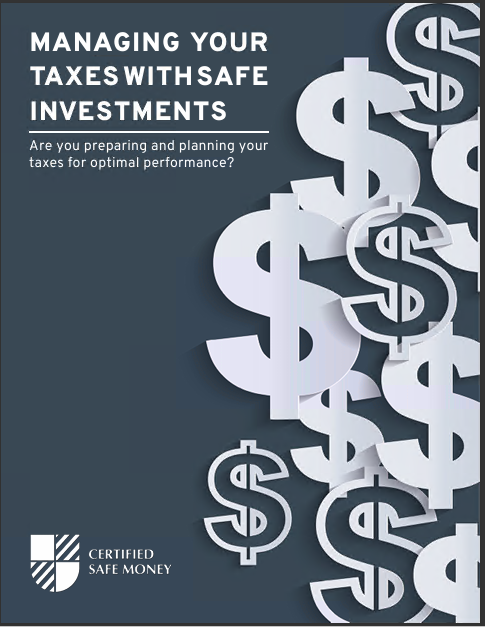Key Takeaways
-
Indexed Universal Life (IUL) policies offer flexibility and protection but come with complexities and fees that may impact long-term growth compared to Roth IRAs.
-
Roth IRAs provide tax-free growth and straightforward investment options, potentially making them simpler and more predictable for long-term retirement planning.
Understanding Indexed Universal Life and Roth IRA Basics
When exploring safe money methods, two popular options often emerge: Indexed Universal Life (IUL) insurance and Roth Individual Retirement Accounts (IRAs). Both have their perks, but they operate differently and may serve distinct roles in your financial strategy. Before you dive into either, it’s crucial to understand their core differences and how they impact your financial future.
Let’s unpack five essential points you need to consider before selecting an Indexed Universal Life policy over a Roth IRA.
1. Flexibility vs. Predictability: How Much Control Do You Want?
The Appeal of IUL Flexibility
Indexed Universal Life policies are attractive due to their adjustable premiums and death benefit flexibility. Unlike other insurance policies, an IUL allows you to alter your payments within certain limits, giving you financial breathing room during tough economic times. Plus, you have a say in where your cash value growth is tied, typically linked to the performance of a market index, such as the S&P 500.
The Predictability of Roth IRAs
On the other hand, Roth IRAs offer less flexibility in premium payments but more straightforward predictability. You invest post-tax dollars up to the annual limit set by the IRS (in 2025, it’s $7,000 if you’re under 50 or $8,000 if you’re 50 and older). Growth is straightforward—your investments (stocks, bonds, mutual funds) accumulate tax-free, and distributions after age 59½ are tax-free, provided the account has been open for at least five years.
Decide whether you prefer predictable, straightforward growth or more flexibility with potentially variable outcomes.
2. Understanding the Cost Structure: Fees Can Add Up
The Hidden Costs of Indexed Universal Life
When considering an IUL, it’s crucial to factor in fees. These policies often come with administrative fees, insurance charges, and costs related to mortality and expenses. These can significantly eat into your returns over time, particularly if the market performance linked to your policy isn’t consistently strong.
Also, consider surrender charges. If you withdraw or terminate your IUL policy early—typically within the first 10-15 years—you might face hefty surrender penalties that could erode your accumulated value.
Roth IRA: A Simpler Cost Structure
With a Roth IRA, fees are generally lower and more transparent. You may face small administrative fees depending on the brokerage firm, and investment-specific fees like expense ratios for mutual funds or ETFs, but these are usually minimal and straightforward. Roth IRAs rarely involve complex hidden costs or surrender fees.
Ensure you carefully review all associated costs and compare them side-by-side to avoid unwanted surprises down the line.
3. Risk vs. Reward: Balancing Safety and Potential Returns
IUL: Safety with a Market Link
One appealing feature of IUL policies is the downside protection. Your principal isn’t directly invested in the market, meaning you typically have a floor (usually around 0%) that protects you against losses in negative market years. This can offer peace of mind if market volatility is a significant concern.
However, this safety comes at a price. Many IUL policies also have caps on the upside, meaning even in stellar market years, your returns are limited.
Roth IRA: Potential for Higher Growth
Conversely, Roth IRAs offer the opportunity for higher returns since your investments are directly in the market without caps. Of course, this also means exposure to market volatility. Over long periods, though, the potential for compounding growth is typically greater than with IUL policies.
Decide how much market volatility you’re comfortable with and weigh it against your desired growth potential.
4. Tax Considerations: When and How Do You Want to Pay Taxes?
The IUL Tax Structure
Indexed Universal Life insurance policies accumulate cash value on a tax-deferred basis. This means you don’t pay taxes on gains as long as the funds remain inside the policy. Additionally, policy loans or withdrawals can be tax-free, provided the policy remains active until your death. However, withdrawing more than your contributions or allowing the policy to lapse can result in significant tax liabilities.
Roth IRA Tax Advantages
A Roth IRA provides complete tax-free growth. Contributions are made with after-tax money, so your principal and earnings can be withdrawn entirely tax-free after age 59½, as long as the account has been active for at least five years. This clarity and simplicity make Roth IRAs highly attractive for retirement planning.
If tax-free retirement income and simplicity are priorities, a Roth IRA might have the advantage.
5. Estate and Legacy Planning: Leaving a Financial Footprint
The Legacy Potential of IUL
IULs are insurance products, first and foremost, designed to leave behind a death benefit to beneficiaries tax-free. This makes IULs attractive if legacy and estate planning are important to your overall financial strategy. It can offer immediate liquidity to your heirs, helping them manage taxes or debts efficiently.
Roth IRA as an Estate Tool
Roth IRAs can also serve as effective estate planning vehicles, but their primary function is retirement income rather than legacy planning. Beneficiaries inherit Roth IRAs tax-free but are generally required to withdraw the funds within 10 years of inheritance. This may limit their long-term value as a wealth transfer tool compared to an IUL’s immediate death benefit.
Think carefully about your goals: Are you primarily planning for your retirement, or is wealth transfer a significant consideration?
Weighing Your Options: Making a Thoughtful Choice
Both Indexed Universal Life and Roth IRAs have unique strengths and weaknesses. Your choice ultimately depends on your financial goals, risk tolerance, and preferences for simplicity versus flexibility. If you value straightforward, tax-free retirement income and minimal complexity, a Roth IRA might be your ideal pick. However, if flexibility, legacy planning, and downside protection matter most, an Indexed Universal Life policy might fit your objectives better.
Before deciding, it’s always wise to discuss your options thoroughly with a financial advisor who can guide you toward the most suitable solution based on your unique financial situation and retirement objectives.












